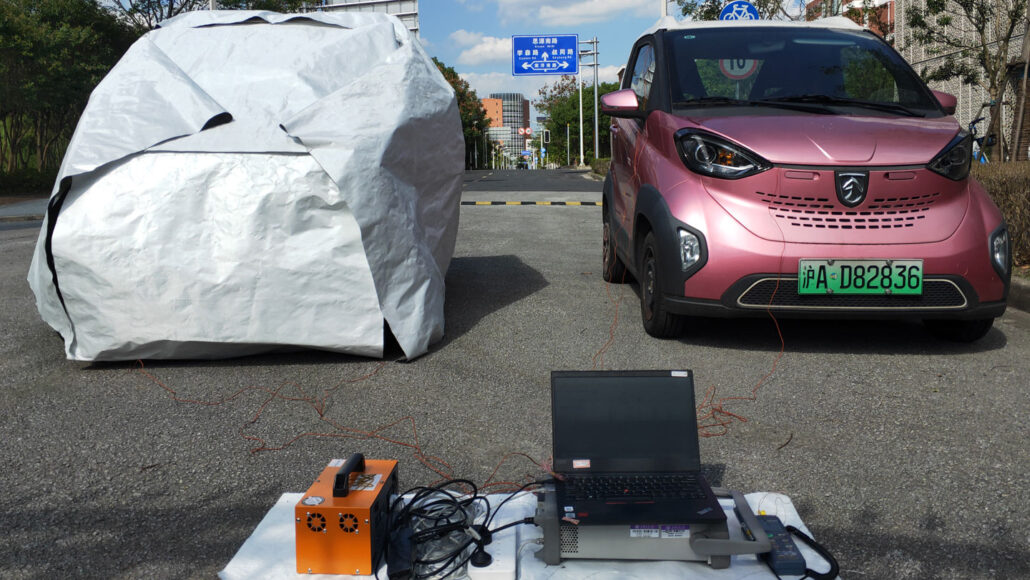Questions for ‘New thermal ‘cloak’ keeps spaces from getting too hot or too cold’

The prototype fabric draped over the electric vehicle at left kept its inside temps up to 28 degrees Celsius (50 degrees Fahrenheit) cooler than the same-model uncovered car (right) on a summer day in Shanghai, China.
Huaxu Qiao